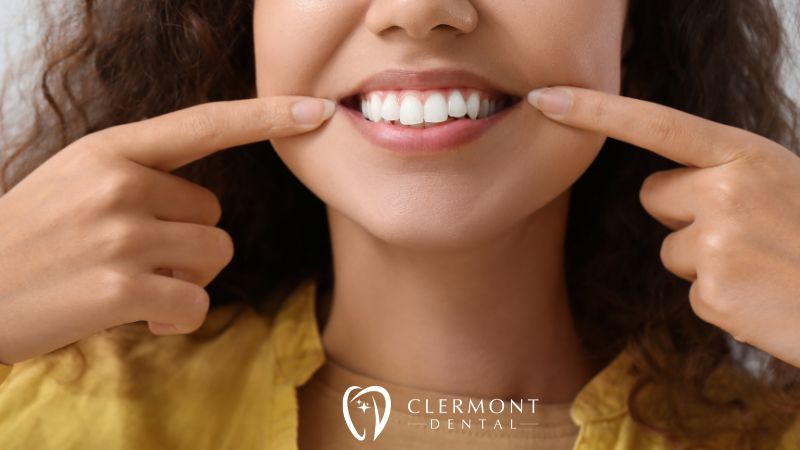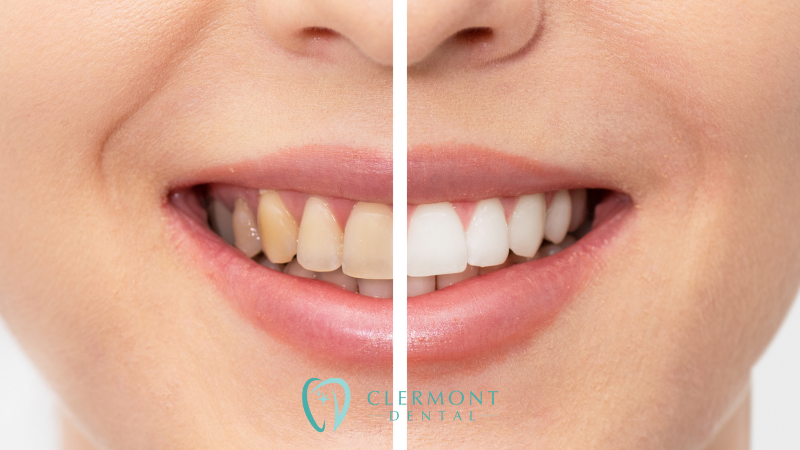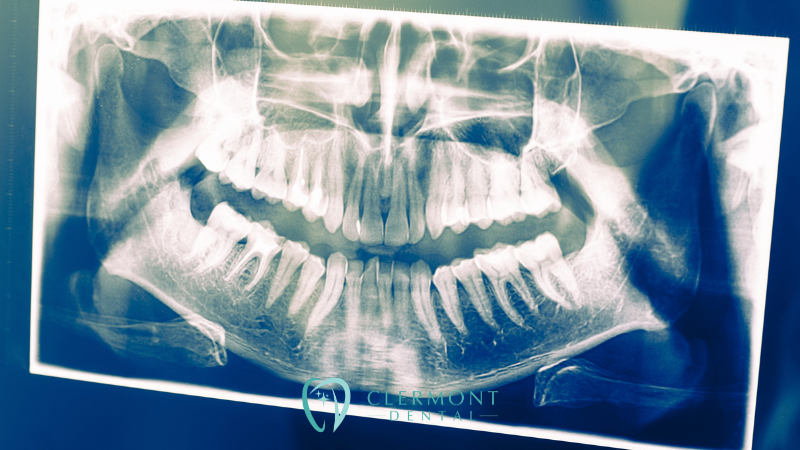In the world of cosmetic dentistry, there are many options to improve your smile. But one of the most popular is dental veneers. If you’re considering getting veneers, here’s what you need to know:
- What are Veneers?
- How do they work?
- Type of Veneers
1. What are Veneers?
According to the American Dental Association (ADA), a veneer is a thin, custom-made shell that is crafted of tooth-colored materials designed to cover the front side of a tooth.
They recreate the natural look of teeth, while also providing strength and resilience comparable to natural tooth enamel.†Veneers are custom made to the contour of your teeth and are bonded to the tooth’s original enamel during a series of in-office procedures.
In addition, veneers are a less invasive option compared to other cosmetic dentistry treatments such as crowns or braces. For example, veneers only cover the front surface of the tooth, while crowns encase the entire tooth. Veneers are also thinner than crowns: about 1 mm, compared to 2 mm.
Meanwhile, an implant is installed in the bone to replace a missing tooth, and a crown is placed on top of that. It can take several months after the implant is placed for the area around it to heal enough for the replacement tooth to be placed on top.
2. How do they work?
In cosmetic dentistry, veneers are an option for correcting stained, chipped, decayed or crooked teeth. Veneers are made by a dental technician, usually in a dental lab, working from a model mold provided by your dentist
It typically takes between 1 and 2 weeks after your dentist creates your mold to get your veneers back from the lab. Once your veneers are in, you can schedule an appointment to have them placed. At this appointment, your dentist or Dr. Safavi will evaluate the fit, shape, and coloration of the veneers to make sure they’re perfect for you.
Next, your dentist thoroughly cleans your teeth. This is important, as it keeps bacteria from being trapped under the veneer and causing decay. After they do this, they use the grinding tool to create a rougher texture on each tooth on which a veneer is to be applied. This makes it easier for the veneer to stick to the tooth.Your dentist then uses dental cement to bond the veneer to the tooth. They’ll then use ultraviolet light to harden this cement quickly.
This second appointment (where veneers are placed) typically doesn’t last longer than 2 hours. But it might vary depending on the number of veneers being done and if a local anesthetic is used.
3. Type of Veneers
There are 4 types of veneers made from different materials, each with their own set of pros and cons:
Porcelain Veneers
These dental veneers are the go-to choice for everyone because they are made of ceramic that has been hardened and expertly created. The earlier varieties of porcelain veneers, which were initially much thicker and frequently used as a method of teeth whitening, have been in use for many years.
They continue to function as a form of teeth whitening today for people whose stained teeth do not respond well to real teeth whitening procedures. Your teeth will be covered in an incredibly thin coating of porcelain during the procedure to restore their white, natural appearance. The process frequently aids in strengthening your teeth and can mimic natural dental enamel.
Due to fantastic advances in cosmetic dentistry, the shaping, sculpting and color treatments available for porcelain have improved so they can be as natural or as artificial as you request.
Pros:
- Stain-resistant
- Similar texture to teeth
- Lasts for 10-15 years
- Low chance of being damaged
- Doesn’t injure gum tissue
Cons:
- Expensive
- Requires enamel to be removed
- Hard to repair when damaged
Composite/Resin
Composite veneers are made of a type of plastic, called resin, which is a mixture of inorganic and organic materials. The natural materials include the initiator, the resin, and the coupling agent.
The bonding material used to make composite resin veneers is the same as tooth-colored dental fillings. While strong, composite veneers are not as durable as porcelain. These veneers have a two- to five-year lifespan, are made of a less expensive material than porcelain, and are custom-made and fitted straight to the teeth.
If you have had dental work already done or want to make cosmetic improvements to your teeth without having to change their color, composite veneers are a viable option. This is due to the fact that they can get more tooth-colored material with composite veneers than porcelain veneers, they are frequently used after aesthetic bonding
Pros:
- Strong and chip resistant
- Lasts 5-10 years
- Smooth texture
- Easily repairable
- Can be applied in a single visit
Cons:
- Prone to discoloration
- Not as durable as porcelain
Palatal Veneers/Onlays
Palatal veneers, also known as onlays, are typically used to restore back teeth (the surface behind front teeth). Because of the medical term for the area under a tooth’s surface, they are known as palatal.
The anterior teeth may also be affected by damaged palatal teeth. Erosion, bruxism, and deep bite are frequently the root causes of these dental issues. Patients with anterior tooth palatal damage typically don’t show any symptoms. Chronic vomiting or serious acid reflux may contribute to a contributing factor in dental erosion.
The use of composite palatal onlays is a fantastic way to fix just the damaged area of the teeth. Instead of using full veneers, this strengthens the tooth and maintains the entire tooth structure, improving oral health.
Pros:
- Perfect for anterior teeth
- Strong and long-lasting
- Improves bite and protects gums
Cons:
- Difficult procedure
- Often expensive
- Sometimes more than one visit is needed
Temporary Veneers
There are removable options available if the severity of your dental issues prevents you from being a candidate for permanent porcelain veneers.
These are fastened over your teeth with tiny metal posts that slide into the grooves in your bite and can be made of composite resin. Removable veneers are short-lived and should be taken out before brushing or eating, but they effectively correct small cosmetic flaws like gaps or chips.
When traditional veneers are added to your mouth, a portion of your enamel needs to be removed, making it an irreversible process. Temporary veneers might not last as well, blend in as well, or be uncomfortable, but they do provide you with a non-invasive and easily reversible decision.
Pros:
- Instant veneers for your mouth
- Can be easily removed
- Protect your teeth while waiting for a permanent solution
Cons:
- More fragile than other veneers
- Can be easily stained
- Can easily chip or crack
Conclusion
Now that you have some more facts, dental veneers are a great way to give your teeth a makeover and improve your smile. They can also help protect against tooth decay and staining, as well as improve the health of your gums. If you’re interested in learning more about dental veneers or any other cosmetic dentistry procedure, contact us today








